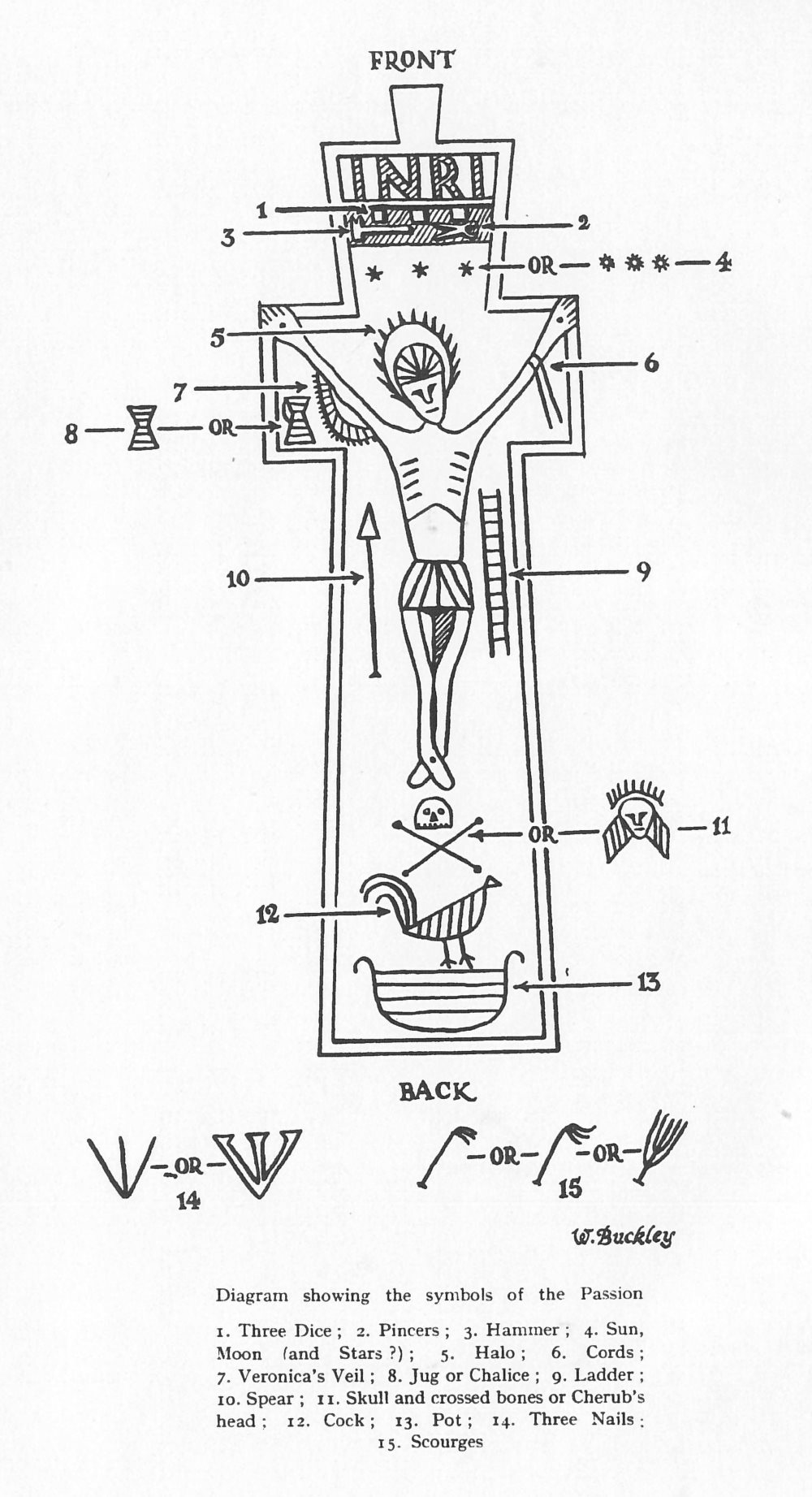They range in dates from the early eighteenth century until just past the middle of the nineteenth century.
They have been described as one of the few examples of Irish folk art to survive until present times.
As they came into the National Museum of Ireland’s collections, their details would have been recorded on index cards such as those displayed below. Strictly speaking they should be called crucifixes but as can be seen from the cards, even within the Museum, there were changes over time in the terminology used to describe these objects. Penal Crosses is the term that comes to us through folk tradition and is the term we use to describe them today.

It has been argued that the crosses, through similarities in style and technique, have a single origin. They were likely carved and sold in the vicinity of Lough Derg, Co. Donegal to those undertaking the pilgrimage to Station Island. The dates carved onto the crosses recorded the year a pilgrimage was undertaken.
Similarities can be seen in the inscriptions. On the obverse (front face), INRI (Latin: Iēsus Nazarēnus, Rēx Iūdaeōrum / English: Jesus the Nazarene, King of the Jews) and on the reverse is normally found the monogram IHS (an abbreviation of the name ΙΗΣΟΥΣ (Jesus) from Greek). They also have in common certain symbols – although these are not always present in every instance. Amongst these can be seen the pincers, hammer, dice, ladder, spear, cock-in-a-pot, scourges and three nails.

from A.T. Lucas & H.G. Tempest,
' "Penal" Crucifixes', Journal of the County Louth Archaeological Society, 1954, Vol. 13, No. 2, pp 145-174
by Liam Doherty, Irish Folklife Division
